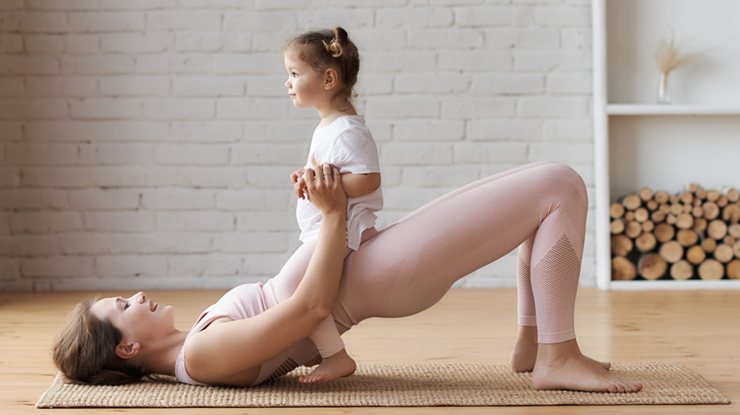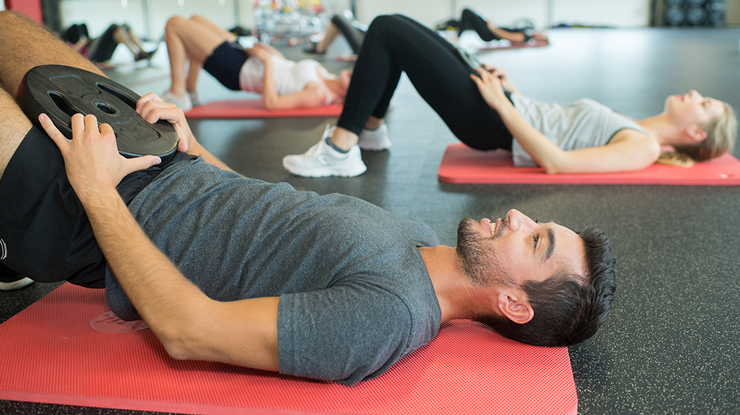Pelvic floor training for globetrotters: Things to know and other tips
Pelvic floor weakness will affect approximately 30% of women at some point in their lives, with the likelihood increasing as they age. Symptoms, including incontinence and digestive issues, can not only be embarrassing but are also typically resistant to quick-fix medications. As a result, preventative measures are crucial.
Although bladder weakness support products in drugstore are becoming more and more common, the topic of the pelvic floor or pelvic floor training still receives relatively little attention or consideration. Too many times this only becomes taken seriously when it’s too late and it actually affects a woman (or man). But problems related to a weak pelvic floor can be very unpleasant, especially when travelling or frequently changing residence.
Why the pelvic floor is important
The pelvic floor is located in the lower part of your pelvis and is made up of a muscle plate and fascia that gives stability and support to the organs of your pelvis and abdomen. It is essential when you go to the toilet and when your core needs to build up or withstand pressure - for example, when you cough, laugh or exercise. Depending on the activity, a healthy interplay of contraction and relaxation is required.
What is pelvic floor weakness?
Pelvic floor weakness can manifest through symptoms such as urination and bowel movement issues, as well as abdominal pain and cramps. Although commonly associated with women-specific causes like pregnancy, childbirth, and menopause, men can also experience pelvic floor weakness, which can lead to erectile dysfunction resulting from prostate cancer surgery, among other factors. Contributing factors to pelvic floor weakness can include general causes such as obesity, lack of exercise (especially prolonged sitting), incorrect exercise techniques (e.g. jogging without proper stretching), and poor posture.
When symptoms such as incontinence arise, it is crucial to seek medical advice to determine if other underlying conditions are causing the problem, and to identify appropriate treatment options. However, individuals with issues such as incontinence or erectile dysfunction often feel embarrassed to seek medical attention, leading to delayed diagnosis and treatment. Moreover, people who frequently relocate must find a trusted healthcare provider to address these intimate concerns, which can be challenging depending on the country of residence.
In the case of an existing pelvic floor weakness, a longer-term consultation with medical staff is also useful in order to coordinate a targeted intervention strategy. This can be difficult if the affected person changes their place of residence frequently and thus underlines the relevance of preventive measures.
Pelvic floor exercises for at home and on the road
Pelvic floor exercises can typically be performed easily and quickly without any specialized equipment or expertise, making them convenient for home workouts. While a gym membership or personal trainer can be beneficial for overall health, they are not essential for pelvic floor training.
To effectively engage the pelvic floor muscles in subsequent exercises, it's beneficial to familiarize oneself with their location and sensations. These muscles are the ones that you contract and feel when intentionally pausing the flow of urine while urinating.
Once you've become familiar with your pelvic floor muscles, you can incorporate everyday activities to train them, such as contracting them tightly for a few seconds and then releasing them. However, using urination for pelvic floor training is not recommended, as it only helps you identify the muscles initially. Additionally, there are numerous free apps available in the app store that offer this type of pelvic floor training. Simply search for "Kegel" or "pelvic floor training" to find many apps focused on strengthening these muscles.
Pelvic floor lifting
Lie on your back with your arms relaxed beside your body and bend your legs. Push your hips up (so that your thighs and abdomen form a straight line), press your feet into the floor, also tensing your pelvic floor, and hold this position until you can't do any more. Then sink back into the starting position, vertebra by vertebra, and repeat several times.

The pelvic floor and diaphragm are interconnected through breathing, so engaging in shallow and constricted breathing, that mainly involves the upper chest area can hinder the natural movement flow of these two structures. By practicing conscious and calm breathing techniques that focus on the abdominal cavity, we can guide our body back to its natural balance and induce relaxation in our psyche. Incorporating deep abdominal breathing exercises in our daily routine, especially in stressful situations or before bedtime, can help loosen muscles, nerves, and tissues.
In addition to specific pelvic floor exercises designed to strengthen (see info box "Pelvic floor lifting"), it is also important to be able to relax the pelvic floor - flexibility is the magic word here! Like a trampoline that is neither too tight nor too loose so that it can swing in optimal balance. Our organs then also enjoy this.
This dynamic is also reflected in the principle of yoga, which is made up of the two components sthira (powerful/dynamic) and sukha (lightness), which form a unity. The yogis among us are probably familiar with this. Many physical therapists would agree that our pelvic floors are rather crunched up and we would do well to bring about an ideal balance that combines the two components of strengthening and relaxation. "Elasticity of the pelvis means elasticity of the mind" is what the ancient Chinese said about this.
As a relaxation exercise for the pelvic floor, you can intuitively and extremely slowly circle the pelvis in quadrupedal position with your legs slightly apart, pushing the ischial tuberosities away from you to feel the full stretch between them, while breathing gently and deeply into your abdomen.
There are also a number of sports that have a positive effect on the pelvic floor muscles, such as swimming, jogging, hiking, cycling, dancing, Pilates, or yoga. If you already have symptoms, any new sports programme should be discussed with a health professional.
 © auremar, AdobeStock
© auremar, AdobeStock


